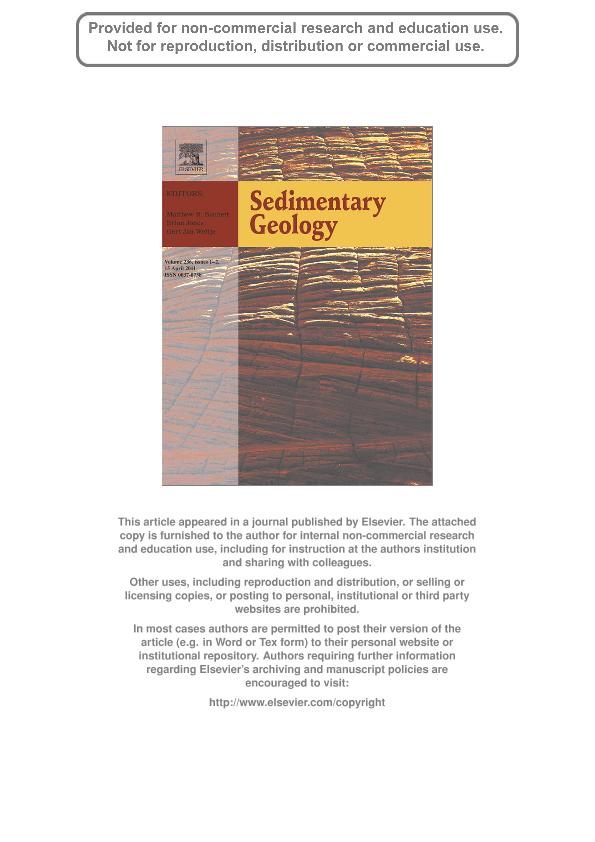Artículo
Sedimentology, diagenesis and ichnology of Cretaceous and Palaeogene calcretes and palustrine carbonates from Uruguay
Fecha de publicación:
04/2011
Editorial:
Elsevier Science
Revista:
Sedimentary Geology
ISSN:
0037-0738
Idioma:
Inglés
Tipo de recurso:
Artículo publicado
Clasificación temática:
Resumen
The Cretaceous (Mercedes Formation) and Paleogene (Queguay Formation) deposits cropping out in W and S Uruguay comprise two terrestrial limestone units that are very rich in trace fossils. The study of these units permits to propose a sedimentological model for palustrine limestones and calcretes in which the distribution of different types of trace fossils is considered. The study units include three main types of deposit: lacustrine limestones, palustrine limestones and calcretes. The lacustrine limestones are relatively homogeneous and contain gastropods, charophytes and ostracods, but no trace fossils. They were deposited in a relatively more perennial lacustrine environment. The palustrine limestones include four different facies: desiccated mudstones, nodular limestones, granular limestones and gravel-sheets. The desiccated mudstones indicate a lesser degree of pedogenic modification and the granular limestones a higher degree. The gravel-sheets are an indication of the reworking of previous limestones deposits during low lakewater levels. Most of the palustrine limestones (except the gravel sheets) contain the same bioclasts as the lacustrine limestones plus a variety of trace fossils such as Rebuffoichnus sciuttoi, Fictovichnus gobiensis and different ichnospecies of Celliforma. The calcretes are either massive (groundwater) or laminar. The massive calcretes are sandy limestones made up of a carbonate matrix and cements. The laminar calcretes (root mats), which contain alveolar septal structures, occur as centimetre-thick layers and can be seen in all types of deposit. They contain the same trace fossil association as the palustrine limestones; the massive calcretes are poorer in such fossils. The distribution of trace fossils in these environments is under strong facies control and provides good evidence of subaerial exposure and semi-arid climates. All the limestones are partially replaced and cemented by opal and quartz, but in all cases the primary structure is preserved. Silicification occurred under groundwater meteoric conditions. Overall, the limestones facies (calcretes, palustrine and lacustrine) and their lateral distribution likely reflect the existence of wetland environments in semiarid to sub-humid climates. These climatic conditions were interrupted by a period of increased precipitations, probably the Early Eocene Climatic Optimum.
Archivos asociados
Licencia
Identificadores
Colecciones
Articulos(MACNBR)
Articulos de MUSEO ARG.DE CS.NAT "BERNARDINO RIVADAVIA"
Articulos de MUSEO ARG.DE CS.NAT "BERNARDINO RIVADAVIA"
Citación
Alonso Zarza, Ana M.; Genise, Jorge Fernando; Verde, Mariano; Sedimentology, diagenesis and ichnology of Cretaceous and Palaeogene calcretes and palustrine carbonates from Uruguay; Elsevier Science; Sedimentary Geology; 236; 1-2; 4-2011; 45-61
Compartir
Altmétricas




